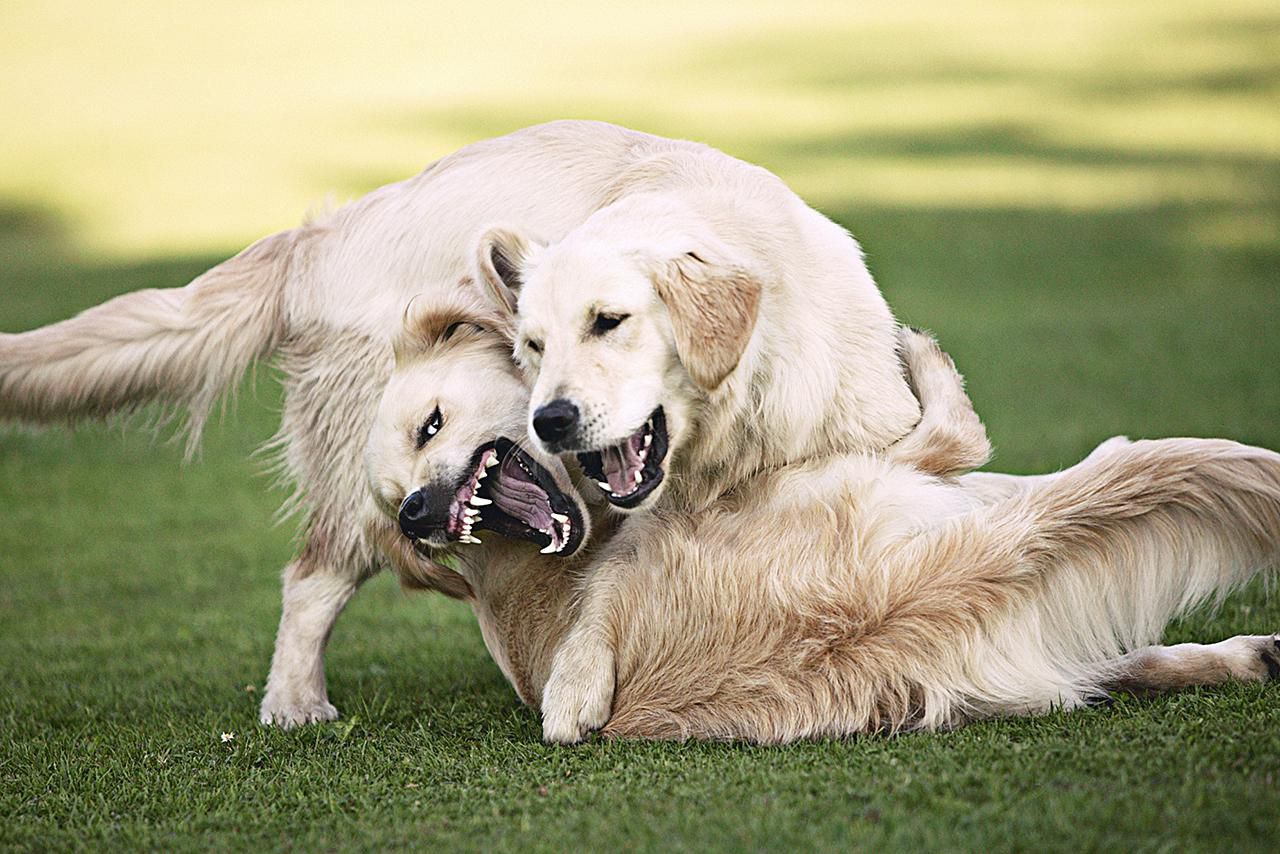Many times, dog owners misinterpret or fail to address behavioral problems in dogs. Or maybe you want to assist your dog with a difficult problem and are new to dog ownership. To solve and avoid canine behavior issues, one must first gain a thorough awareness of the most prevalent ones. With a firm basis in obedience training, many of these problems can be solved or at least managed more effectively.
The connection between a dog and its owner can be harmed by behavioral problems in dogs that vary from aggressive behavior to constant barking. These problems are frequently the result of underlying reasons such as inadequate socialization, worry, or fear. Such actions not only disturb domestic harmony but also show signs of distress in the dog.
A comprehensive strategy that includes regular routines, enrichment of the surroundings, and organized dog training biting is needed to address these issues. Seeking advice from experts, such behavior specialist for dogs or veterinarians, can yield customized approaches for efficiently controlling and altering these tendencies.
1.Barking behavioral problems in dogs
Most dogs make some sort of vocalization. They could yap, howl, bark, and more. It is deemed a behavioral issue when someone barks excessively.
Find out why your dog is vocalizing in the first place before trying to stop them from barking excessively. Among the most typical forms of barking are:
- Alert or caution
- Exuberance and playfulness
- Focus-grabbing
- Fear and nervousness
- Lack of activity
- Taking other canines into consideration
Recognize when to stop barking excessively. Teach them directions to bark or be quiet. Keep your cool and exercise patience. Deal with the underlying reasons for the barking. A dog’s barking can be greatly reduced with commitment and careful consideration of details.
2.Gumming behavioral problems in dogs
For dogs, chewing comes naturally to them. As it happens, most dogs get their chewing from their innate tendencies, which makes it a vital pastime. Still, if your dog causes damage while overeating, it can easily develop into a behavioral issue. The following are the main causes of dog chewing:
- teething in puppies
- A lack of interest or excessive energy
- dog food aggression
- Inventiveness (particularly in pups)
Have plenty of suitable chew toys available for your dog so they will chew on the right stuff. Away from your dog, store personal belongings. Ensure that your dog is confined to a less disruptive area or housed in a crate while you are gone from the house.
Offering your dog a chew toy can serve as a distraction and replace whatever they are chewing on incorrectly. In order to stop your dog keeps chewing paws, it is crucial to offer regular running for them as it keeps them happy and helps them burn off excess energy.
3.Excavation behavioral problems in dogs
Most canines have an innate desire to dig if given the opportunity. Because of their hunting heritage, some famous dog breeds—such as terriers—are more likely to dig. Generally speaking, dogs dig for the following reasons:
- A lack of interest or excessive energy
- Fear or anxieties
- hunting inclination
- Requiring comfort (like cooling off or nesting)
- Possessions (like toys or bones) that you want to hide
- to depart from or enter a location
Your dog may get quite obnoxious if they enjoy digging up your yard. Seek to determine the origin of the digging and implement measures to eliminate it. Increase your dog’s activity, quality time spent together, and training efforts. If digging appears unavoidable, dedicate a space, such as a sandbox, for your dog to dig at will. Teach your dog that digging is permitted here alone.
4.Anxiety related to separation
Dog behavior training concerns, including separation anxiety, are among the most frequently discussed. When a dog is abandoned by its owner, it may show up as vocalizing, chewing, inappropriate peeing and feces, and other destructive behaviors. 2 Separation anxiety is not the cause of every one of these behaviors. True separation anxiety manifests as one of the following symptoms:
- As soon as the owner gets ready to go, the dog gets nervous.
- After the owner departs, misbehavior usually happens within the first 15 to 45 minutes.
- The dog’s desire is to always go with its owner.
- Every chance it gets, the dog tries to touch its owner.
Exercises for desensitization, behavior modification, and specialized training are necessary for treating true separation anxiety. In severe situations, prescription medication could be advised.
5.Incorrect Removal
Irregular urination, or defecation, is one of the most bothersome characteristics of dogs. They could contaminate certain portions of your house and turn your dog into an object of hate in public or at other people’s houses. Your dog behavior specialist should be consulted about this habit to rule out any health issues. Given that the behavior has no medical explanation, explore the reason for it. There could be a few possible answers:
- Excitement/submissive urination
- Marking of territory
- Uncertainty
- inadequate house training
When puppies are young, especially younger than 12 weeks, inappropriate elimination is inevitable. It’s a different story with older pets. To break an ingrained habit, many dogs need significant behavior change.Most adult, potty-trained dogs are able to be trained to ring “doggy doorbells” to alert their owners when it’s time to let them empty itself.
6.Appealing
Dog owners sometimes accidentally teach their pups to beg, even though it’s an awful habit. Obesity and digestive issues may result from this. Dogs who adore food will beg. But food is not love, and table crumbs are not treats. While it may be difficult to ignore that yearning gaze, giving in “just this once” leads to issues down the road.
Tell your dog to go to their spot before you eat, preferably somewhere they can’t stare at you. If required, keep your dog in a different room. After you and your family have eaten, give them a special treat if they behave.
7.Trailing
It is just a manifestation of their predatory nature when dogs chase moving objects. A lot of dogs chase humans, cars, and other dogs. There could be hazardous and disastrous results from any of these. Even though your dog may persist in chasing, there are precautions you can take to avoid a disastrous situation.
- Unless under direct supervision indoors, keep your dog leashed or in a limited space at all times.
- Teach your canine to come when called upon.
- To attract your dog’s attention, always carry a dog whistle or noisemaker with you.
- Keep an eye out and be mindful of any potential triggers, including joggers, cars, and wildlife.
Avoiding the chase by getting out of control is your best bet for victory. Your dog will learn to look at you first before taking off if they receive consistent, lifelong training.
8.Leaping Up
Dogs frequently jump up; it’s in their nature. Puppies leap to welcome and touch their moms. They might later spring up to greet people. Dogs may also spring up when they are happy or are trying to find something in their hands. Dogs that jump can be dangerous as well as annoying.
While there are numerous techniques to curb a dog’s jumping, not all of them will work. While lifting a leg, gripping the paws, or pushing the dog away could be effective in certain situations, most dogs will interpret these actions as negative. Since dogs frequently jump up to get attention, any recognition of their activity will provide them with an instant reward, which will encourage them to jump even more.
The best course of action is to just ignore your dog. If you have to, move on. Don’t talk to your dog, touch him, or make eye contact. Proceed with your activities. Calmly give him a treat when he settles down and stays still. Your dog will quickly understand the message.
9.Snagging
There are various reasons why dogs bite and nip, but the majority are innate. In order to investigate their surroundings, puppies pinch and bite. When necessary, mother dogs use discipline to teach their puppies not to bite too hard. The puppies’ ability to control their biting is enhance by this. Maintaining bite inhibition training is often necessary for owners to teach their puppies that biting and mouthing are unacceptable.
Puppies aside, there are other reasons why dogs may bite. It is not always aggressiveness that drives someone to bite or snap. Numerous things can cause a dog to snap, nip, or bite.
- Fear aggression in dogs
- Offense
- Preservation of property
- Anguish or illness
- The instinct of predation
Any dog that feels that the circumstances warrant it may bite.Dog breed owners and breeders may lower the chance of their dogs attacking by using proper training, interacting with others, and breeding techniques.
10.Violence behavioral problems in dogs
A violent dog will snap, bite, grumble, scream, and flash its teeth. It’s important to understand that dogs may grow vicious, despite their breed or training. Violent dogs are more prone to act violently toward people or other dogs if they come from breeds known for being violent or cruel.
Regretfully, some breeds are prohibited in some places and given the designation “dangerous.” That usually has more to do with history than the breed, though. The behavior of dogs is greatly influenced by their surroundings. Dogs can acquire some aggressive tendencies, regardless of breed.
Give your veterinarian a call as soon as you believe that your pet may be ill. Asking inquiries regarding health-related issues is best done through your veterinarian, who has examined your pet, is familiar with their medical history, and can offer the best advice.





